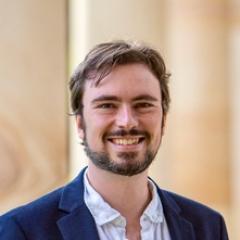Finding planets around hot stars with TESS
Project level: Honours
Most cool stars outside of binaries, like our Sun and main sequence stars cooler than it (ie GKM stars), are now known to host planetary systems. But among stars that are hotter than the Sun (OBAF types), we have a much poorer grasp of exoplanet populations, except for the general idea that probably planets form more rarely around these short-lived stars with their harsh heat. There are several observational biases that hold us back in studying these: these stars are rarer (so statistics are poorer), and their masses are higher (so radial velocity signals are weaker) and radii are larger (so transits are shallower). But it is also partly because these stars often pulsate - for example, δ Scuti and γ Doradus stars. These pulsation signals show up in RVs and in light curves and drown out the fainter planetary signals. Only single-digit numbers of planets in these systems are known, and even one new discovery would be significant.
The Transiting Exoplanet Survey Satellite (TESS) is searching the whole sky for transiting planets and pulsating stars. As a magnitude-limited survey, it is actually biased to looking at hot main sequence stars and giants. As well as this, there are hundreds of stars in Kepler and K2 that have not been looked at in sufficient detail. Together these form a substantial sample for better constraining the overall population of hot star planets.
As an Honours project, or as a part of a PhD project, a student would use code I have already substantially developed and code developed by my collaborators, to separate out the signals of stellar pulsation and potential exoplanet transits. By doing this, we will put powerful constraints on the population of planets around hot stars and better understand the physics of star formation in these hostile environments. This project will suit a student with some Python skills, and an interest in understanding the physics of stars and their planetary systems.

